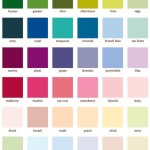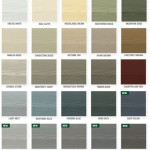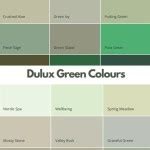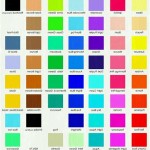Exploring The Wonders Of Crayola Watercolor Painting Tutorial
Watercolor painting, a medium known for its delicate washes and luminous effects, often appears daunting to beginners. However, the accessibility and vibrant colors of Crayola watercolors present an excellent entry point for individuals of all ages and skill levels to explore this artistic avenue. This article will delve into the wonders of Crayola watercolor painting tutorials, offering insights into techniques, materials, and creative possibilities associated with this approachable medium.
Crayola watercolors, readily available and budget-friendly, provide a simplified approach to traditional watercolor painting. Their ease of use and quick-drying nature make them ideal for learning fundamental watercolor techniques without the complexities of professional-grade materials. While professional watercolors offer nuances in pigment and longevity, Crayola watercolors enable experimentation and exploration, fostering a foundation for future artistic endeavors.
A successful Crayola watercolor painting tutorial should encompass several key elements. First, it must clearly define the necessary materials, including the Crayola watercolor set, appropriate paper, paintbrushes, water containers, and mixing palettes. Second, it must explain the basic principles of watercolor painting, such as color mixing, layering, and blending. Finally, it must provide step-by-step instructions for specific projects, allowing learners to apply the acquired knowledge and develop their artistic skills.
Understanding Basic Materials for Crayola Watercolor Painting
The cornerstone of Crayola watercolor painting is, naturally, the Crayola watercolor set. These sets typically include a range of vibrant colors in dry pan form. While the included paintbrush can suffice for initial experimentation, investing in a set of round and flat watercolor brushes of varying sizes can significantly enhance control and precision. Round brushes are versatile and suitable for detailed work, while flat brushes are ideal for creating washes and filling larger areas.
Paper selection plays a crucial role in the overall outcome of the painting. Standard printer paper is generally not recommended for watercolor painting as it is thin and prone to buckling and warping when exposed to water. Watercolor paper, available in various weights and textures, is designed to withstand the effects of water without significant distortion. Heavier weight paper, such as 140lb (300gsm), is preferable for maintaining the integrity of the painting. Cold-pressed watercolor paper, characterized by its slightly textured surface, is a popular choice for beginners as it allows for better control and absorption of the paint. Hot-pressed paper, with its smooth surface, is more suitable for detailed work and fine lines, but may be more challenging for novice users.
Clean water is essential for watercolor painting. Two containers of water are recommended: one for rinsing the brushes and another for diluting the paint. Maintaining clean water ensures that the colors remain pure and vibrant. A mixing palette, such as a ceramic plate or a plastic palette with wells, is necessary for blending colors and creating custom shades. Paper towels or a clean cloth are useful for blotting excess water from the brushes and for cleaning up spills.
Mastering Fundamental Watercolor Techniques
Several fundamental watercolor techniques are essential for creating captivating paintings with Crayola watercolors. These techniques include color mixing, layering, wet-on-wet application, and dry brush techniques.
Color mixing is the art of combining different colors to create new shades and hues. Crayola watercolor sets typically include a limited range of colors, making color mixing a necessary skill for expanding the palette. By understanding basic color theory, it is possible to create a wide variety of colors by combining the primary colors (red, yellow, and blue) in different proportions. For instance, mixing red and yellow creates orange, mixing yellow and blue creates green, and mixing red and blue creates purple. Experimentation with different color combinations allows for the discovery of unique and personalized color palettes.
Layering, also known as glazing, involves applying thin washes of color on top of each other to create depth and dimension. This technique allows for the gradual build-up of color intensity and the creation of subtle variations in tone. It is important to allow each layer to dry completely before applying the next layer to avoid muddying the colors. Layering is particularly effective for creating realistic textures and shading.
The wet-on-wet technique involves applying wet paint onto wet paper. This technique results in soft, diffused edges and is ideal for creating atmospheric effects and backgrounds. Before applying the paint, the paper is dampened with clean water. The amount of water used will determine the degree of diffusion. Experimentation is key to mastering this technique.
The dry brush technique involves using a dry brush with a small amount of paint to create textured effects. This technique is particularly useful for depicting rough surfaces, such as tree bark or rocks. The dry brush is dragged across the dry paper, leaving behind broken lines and textures. The amount of pressure applied to the brush will determine the intensity of the texture.
Applying Learned Techniques Through Practice Projects
To solidify understanding of the learned techniques, engaging in practice projects is crucial. These projects can range from simple color charts and gradient exercises to more complex landscape and still life paintings. Starting with simpler projects allows for gradual skill development and builds confidence.
A basic color chart is an excellent way to familiarize oneself with the colors in the Crayola watercolor set and to explore color mixing possibilities. By creating a grid and systematically mixing each color with the others, a comprehensive visual reference can be created. This chart serves as a valuable tool for future painting projects.
Gradient exercises involve creating a smooth transition from one color to another. This exercise helps develop control over the amount of water and paint used, as well as the blending technique. Start by applying a concentrated amount of color at one end of the paper and gradually dilute it with water as one moves towards the other end. Practice creating gradients with different color combinations.
Simple landscape paintings, such as sunsets or seascapes, provide an opportunity to apply the wet-on-wet technique and layering. Begin by creating a light wash of color for the sky, using the wet-on-wet technique to create soft, diffused clouds. Once the first layer is dry, add additional layers of color to create depth and dimension. Use layering to create shadows and highlights on the landscape elements.
Still life paintings, such as fruit or flowers, offer a chance to practice detailed work and color mixing. Choose simple objects with interesting shapes and colors. Begin by sketching the outlines of the objects on the paper. Then, use layering to build up the colors and create shadows and highlights. Pay attention to the details, such as the texture of the fruit or the petals of the flowers.
Through consistent practice and experimentation, individuals can unlock the full potential of Crayola watercolors and develop their artistic skills. While Crayola watercolors may not possess the same level of subtlety and permanence as professional-grade paints, they offer a accessible and enjoyable introduction to the world of watercolor painting.
The exploration of Crayola watercolor tutorials opens doors to a vibrant world accessible to all. It underscores the importance of resourcefulness in art education, demonstrating that creativity can flourish even with readily available and affordable materials. The journey through these tutorials fosters not just technical proficiency, but also an appreciation for the nuances of color, light, and form. It encourages experimentation, allowing budding artists to develop their unique styles and find joy in the process of artistic expression.

How To Draw A Winter Wonder Land Creativity Tips Crayola Learning

Crayola Lesson Plans Exploring Watercolour Paints Simple

Painting Perspective

Fun Landscape Painting Adventures With Crayola Paints

Paint A Watercolor Sunshower An Art Activity Crayola Creativity Tips

Watercolor For Beginners White Crayon Resist

Crayon Resist With Watercolor Art Lesson

Watercolor Artist Andrea Nelson S Art Through Mistakes Water Color Activity Crayola Learning

My Perspectives Crayola Artista Ii Watercolour

Simple Watercolor Techniques For A Creative Break Tiktok
Related Posts








